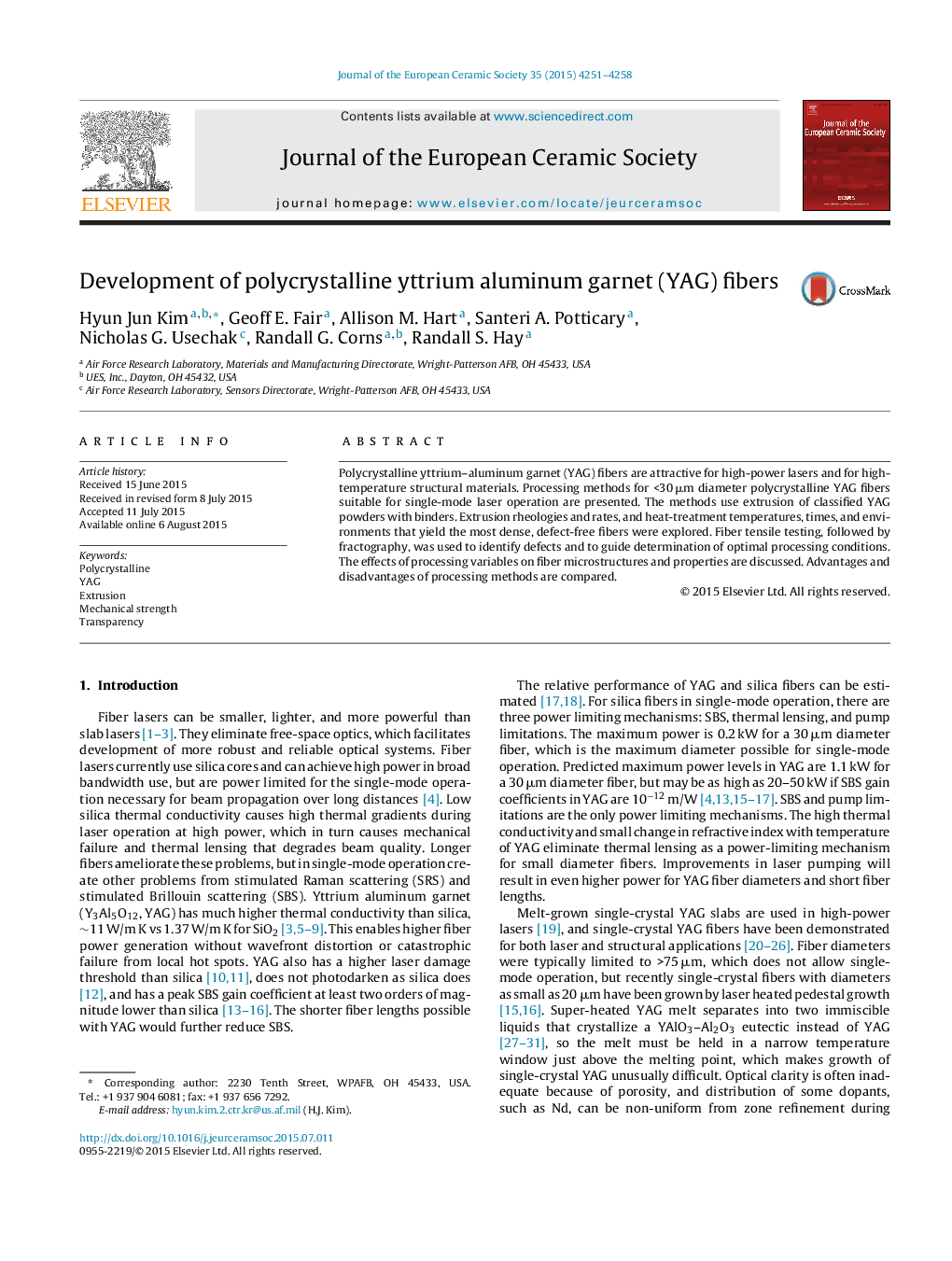| Article ID | Journal | Published Year | Pages | File Type |
|---|---|---|---|---|
| 10629354 | Journal of the European Ceramic Society | 2015 | 8 Pages |
Abstract
Polycrystalline yttrium-aluminum garnet (YAG) fibers are attractive for high-power lasers and for high-temperature structural materials. Processing methods for <30 μm diameter polycrystalline YAG fibers suitable for single-mode laser operation are presented. The methods use extrusion of classified YAG powders with binders. Extrusion rheologies and rates, and heat-treatment temperatures, times, and environments that yield the most dense, defect-free fibers were explored. Fiber tensile testing, followed by fractography, was used to identify defects and to guide determination of optimal processing conditions. The effects of processing variables on fiber microstructures and properties are discussed. Advantages and disadvantages of processing methods are compared.
Related Topics
Physical Sciences and Engineering
Materials Science
Ceramics and Composites
Authors
Hyun Jun Kim, Geoff E. Fair, Allison M. Hart, Santeri A. Potticary, Nicholas G. Usechak, Randall G. Corns, Randall S. Hay,
